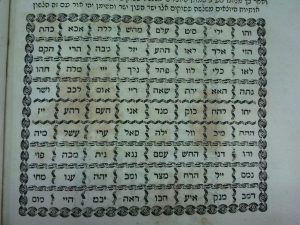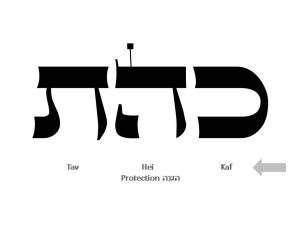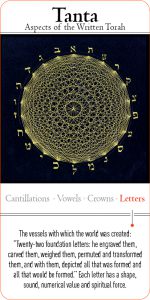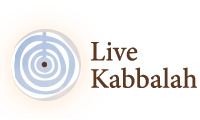Meditation according to Kabbalah is different from the known “common” meditation, which was familiar since the 60’s. Until then, very few heard of meditation, and only in the 70’s the transcendental meditation started to be familiar to millions of people. During the years, more additional types of meditation were created and invented, some by psychologists and other prophets of the New-Age.

The 72 Names of God in The Zohar, Livorno, Italy 1856
The “traditional” meditation is known as a practice that requires special concentration, peace and quiet in order to reach a place of introspection. However, there are many situations in life that need introspection and it happens to be that at the critical moment we find ourselves in an environment that is not calm especially in places or moments of noise, disorder, pressure and chaos. On those critical moments we must be able to stop and look inward and gain control. Meditation according to Kabbalah allows us to reach this level of inner peace at any given moment; acquiring a meditative state in real-time, and stop the outer and the inner noise at once. Then we can go up/take off to the Real World and draw the answers, the energy and everything else we need from there.
The expression used by Kabbalists for meditation for thousands of years is “Kavana” (intention). Kabbalah books are filled with thousands of meditations and it is known that the great Kabbalists were practicing meditation daily and sometimes for hours.
The term “Kavana” is more meaningful of the term “meditation“. It is not just calming, relaxing and having a peaceful thought, but a way to communicate instantly with the upper worlds which allows us to “tune” our thoughts, to direct spiritual energies and concentrate them in order to change our spiritual and material reality (the verbs “to tune”, “direct”, “concentrate”, are all different meanings of the word Kavana).
Basically, Kabbalah presents the goal – “Becoming a Creator”. Meaning, our ability to identify the physical, sensory and illusory reality, the image it projects into our mind and our heart at any given moment, and to say that it is unacceptable or suitable to us, and at that moment to take off to a higher place and draw more beautiful and perfect reality. Then we could say we made a Tikun (correction) and created light out of darkness. However, it is not that simple, since exactly at these moments of stress, panic, despair, pain or excitement (lust or passion for what can harm us), when it seems that all is lost, it is very difficult for us to know and remember that we can stop this world of illusion, communicate with the world of truth (the spiritual world) and draw from there all the energy and the forces we need, and be the Creator in our life.
The “Kavana” techniques of the Kabbalists serve us in every possible aspect of life: healing, prosperity and success, relationships, security, etc., and give us the strength to be Creators – to live in a state when we have total confidence in the concept of “mind over matter”. This is the ability of achieving self-control and reaching high levels of power. According to Kabbalah, only that kind of control can bring us to a real sense of joy, love, compassion and fulfillment.
The concept of Kabbalistic meditation is extremly important since it teaches us how to connect to divine pleasure. This is the original purpose of Creation.
Guided Meditation Exercise – The Tetragrammaton י.ה.ו.ה
The most famous and important sources to the different forms of “Kavana” are the Zohar and the Ari writings, among them, “Shaar Ruah Ha’Kodesh” (the Gate of Holy Spirit), “Sha’ar Ha’Kavanot” (The Gate of Kavana) and “Pri Ets Haim” (The Fruit of the Tree of Life).
There are ten basic techniques that the Kabbalistic meditations consist of:
- The Creator’s Names (mantras): concentrating on permutations of letters of the different names of God. Different permutations have different special powers and unique quality for different purposes. There are thousands of ‘names’ and combinations, which are known to and used by Kabbalists.

Guided Meditation Exercise 72 Names of God – Kaf Hei Tav כהת
 Shapes and Patterns (mandalas): it is known that looking at patterns and shapes is an ancient method of achieving transcendence – the Menorah, for example. The main tools are the forms of Hebrew letters, or texts written in a certain way. (For example: Psalms 67).
Shapes and Patterns (mandalas): it is known that looking at patterns and shapes is an ancient method of achieving transcendence – the Menorah, for example. The main tools are the forms of Hebrew letters, or texts written in a certain way. (For example: Psalms 67).- Yihudim: this is a meditation aimed for connecting and uniting opposites: Light and the Vessel, giver and receiver, male and female, heaven and earth. The Yihudim’s main goal is to overcome the separation between the limited logical reality (The world of illusion) and the magical reality of the spiritual world (The True World). Unification of our minds, our bodies and our souls with the Light is the key and main condition for success and prosperity.
- Internal Thought – Inspiration: Quiet, observation and looking into the Light while opening ourselves to an inner wisdom. When we are connected directly to the Light – our source – and to our soul, then the wisdom and knowledge begin to flow to us.
- The “Ain”: A connection to the infinity through meditation of complete silence and total devotion. Reaching that “Ain” will be through total devotion to defeat the evil inclination, ego, inner noise and thoughts. The state of “Ain” is a state which anything is possible and is a prior condition to achieve a state of miracles that are beyond reason and mental understanding.
- Learning: According to Kabbalah the purpose of studying the Torah is to improve our personality and revealing spiritual light in the world. According to the Talmud, studying Torah with the wrong purpose can poison the soul.
- Prayer (A): The purpose of the prayer is changing our consciousness by moving through different dimensions using the Hebrew alphabet and texts determined by Kabbalists as a way of connecting to the upper worlds. God is infinite and his giving is endless and therefore the purpose of prayer is not to convince the Creator to give us His abundance but to change ourselves so we can receive His Light.
- Prayer (B): Talking to the light/Creator/God in order to lower pressure and remove barriers in our lives. This should be an honest and direct addressing through seclusion and without a written text. It can be done when we are alone, for example, outdoors or while driving, or any other situation at any time.
- Dancing: The structure of the human body reflects the ten Sefirot of The Tree of Life. When we move the body in order to connect to the Light we can achieve a spiritual connection. There are no certain movements or choreography. The body’s movement flows by itself as we connect to Light.
 Music: There are four levels of connecting to the worlds:
Music: There are four levels of connecting to the worlds:
- Hokhma – Te’amim (music/tune/melody)
- Bina – Vowels
- Zeir Anpin – Tagim (the crowns above the letters)
- Malkhut – The Letters
The music is above all other tools for reaching Kavanah mentioned above, and that implies of its importance. Music can communicate emotions with no limits of language and that is why it can transfer us easily from the world of illusion (our materialistic world) to the spiritual world.
Live Kabbalah – Kabbalistic Meditation & Kavanah Course – Online:
Live Kabbalah – Kabbalistic Meditation & Kavanah Course – Online
